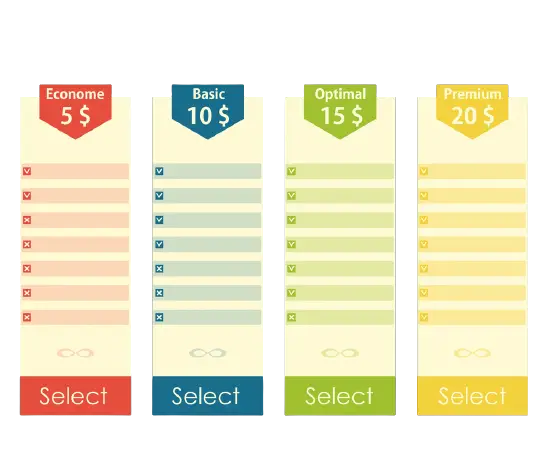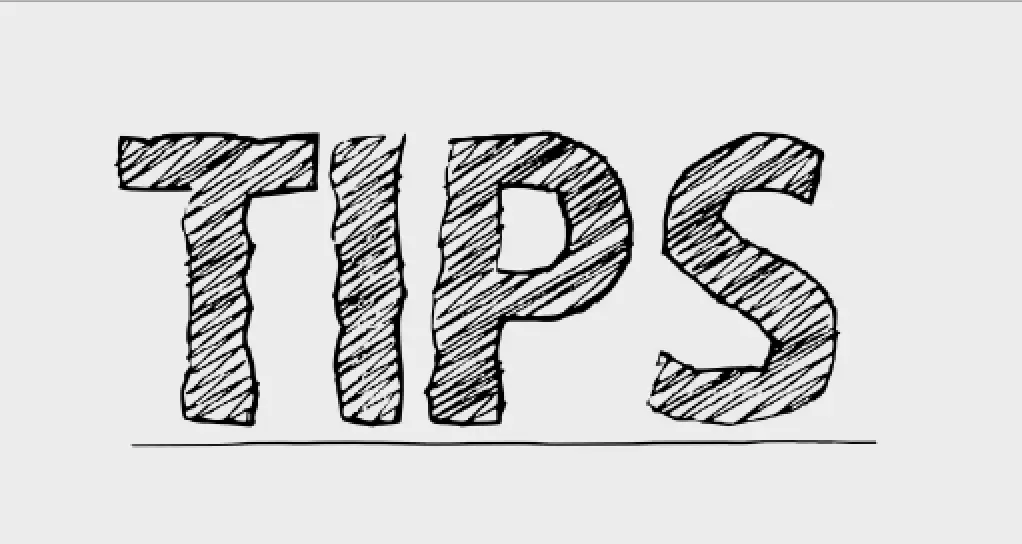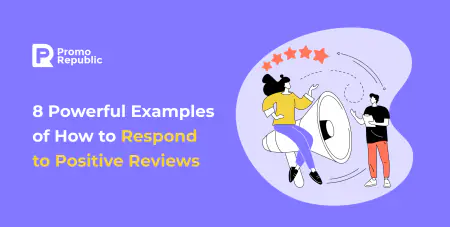How to Create Social Media Marketing Packages for Your Digital Agency

Content writer and blog editor at PromoRepublic
Digital agencies and freelancers price their social media marketing services differently depending on their business models and work types. There are several options for charging your clients: hourly, monthly, project-based, or packages. Each is dependent on whether the freelancer wants to keep this as a part-time gig or if they are looking to scale their own business.
Most high-end clients are looking for social media experts to help them with the full process of social media management. They don’t want to fret about hourly wages nor do they want to track which services they are getting or not. To avoid such unpredictability, they’d buy packages with a specific number of services an agency can offer. It is an easier way for clients to compare and factor them into their budget.
In this article, we will look at how to create different social media marketing packages to attract new clients and grow your agency.
Contents:
- What Is a Social Media Marketing Package
- Why Package-Based Systems Work
- How to Start
- Pricing
- What You Should Pay Attention to
- Useful Tips
1. What is a Social Media Marketing Package
A social media marketing package is a bundled service for marketing your business across different social media platforms.
In most cases, these packages include a range of services\functions\opportunities for a specific price. In most cases, agencies tend to charge a monthly rate for their social media marketing packages.
The most common strategy for an agency is to offer 3 to 5 media marketing packages with an opportunity to choose a customizable one, in case none resonate with the client.
2. Why Package-Based Systems Work
- It’s an industry standard, so it looks more professional.
- You can allow your potential clients to choose which option from the offered range suits them the most.
- It outlines what’s included in each package, highlighting the extras and pinpointing the price points.
- Potential clients can compare your listed packages with other freelancers, agencies, or brands.
- It helps you organize your workflow more efficiently and gather statistics more easily.
- You can upsell lower-tier clients over time as they will grow too and need more services.
3. How to Start Creating Your Own Social Media Marketing Packages
As you know, the social media management industry is highly competitive. Сlients always want to hire somebody who’s an expert in their field, so you’re more likely to grow a successful business by specializing in something.
Start by listing your specialties, create customer personas for your target audience, and find their pain points.
You can do this by asking previous or existing clients about their most significant challenges.
Also, it is a great move to research what services people search for online. Google Trends is a helpful tool that will help you discover whether interest increases or declines over time. Another good option is to look to forums or Q&A sites, such as Quora, to find what problems your audience has and what questions they’re asking to resolve them.
Your audience research will help determine what services your primary client will need and help you work out the depth of your packages. For example, small businesses may need a more general package covering several services, while bigger businesses need more specific or niche assistance. Don’t limit the size or depth of your packages out of fear that you won’t manage to provide all the sold services.
You can manage multiple accounts and campaigns easily using a tool like PromoRepublic. For instance, it’s possible to schedule and automate posting to maximize clients’ social reach with no extra manual work. Also, there are tons of cool templates for your posts with different holidays and memorable days.
As your business grows, you can hire more people and outsource administrative work so that you can take on more clients and increase profits. Start with a basic package of services and decide what the cheaper and more expensive ones will include. There are many ways you can organize your packages.
The Most Common Options
Content creation and publishing
People and businesses are constantly looking for content they can use on social media. That’s why there is a constant need for professionals who can create specifically designed content and publish it with perfect timing to get more people interested. There is always the easiest option which is to post universal content that can fit in multiple social media platforms, but it’s not always the best way to reach your target audience.
For best results, content should be tailored specifically for each network with all the rules and best practices taken into account — for example, picture sizes, character limit, video format, or just rules dictated by trends. All these things matter if you want your content to get the maximum reach and interactions.
Social media content needs to be engaging and needs to encourage people to react and share it to help brands spread their message. Creating content for clients can involve:
- Making graphics or videos.
- Writing social media posts or blog posts.
- Sourcing shareable content from other brands and sources.
Your brand needs to offer something valuable for people to start conversations. And to build it, you need to use creativity, data, and thorough analysis inside your agency or outsourced.
Let’s talk publishing and scheduling: these are incredibly convenient services too. Sometimes even more important than content creation, because even the most high-quality content can lose all its reach potential if posted at the wrong time and in the wrong place. So, it can be difficult for small businesses to find time to post their content ideally, especially across multiple channels.
Deciphering the right time to post can be even more challenging when dealing with an international audience. But if you want to make things easier for your clients, then scheduling is the key. Anything you can do to simplify social media management will be appreciated. Also, you can offer real-time social media monitoring so that brands can avoid awkward situations caused by scheduled posts clashing with topical events. A content calendar is often the best way to guide clients because it is easy to see all the plans and they can change things if needed.
Campaign and community management
Real-time campaign management is one of the services you can offer to help your clients make the most of their social media strategy. By keeping your hand on the pulse, you can see what the client’s audience is talking about and then look for opportunities for content creation.
Consulting and education
Social media can still be new for many business owners. Although they might use it in their personal lives, it’s a very different thing to use it for business. And this is your opportunity to offer services that can guide your clients in the complicated world of social media marketing.
Your services can include educating your clients on how to handle themselves on social media and crystalizing the appropriate brand tone of voice when talking to their audience on different networks. You can help your clients avoid using corporate jargon and adopt a more conversational and friendly approach to interacting with customers. Assist them with creating a social media policy, empowering employees to use social media, and even building a social media team.
Research and analysis
Providing profound research and offering valuable insights for your clients’ brands is key to gaining their business. They want to know everything about their audience: their interests, behavior, and who they are.
Include a comprehensive analysis of competitors’ social media to help your clients spot their strengths and weaknesses, which they can apply to their strategy. Then show them the influencers they should be working with and other helpful tools for growth in their industry. Social listening instruments can track their campaigns and help them identify the hot topics, hashtags, and most valuable discussion areas. Relevance audit services give clients an idea of how relevant they are to their market and community.
Your agency can help businesses take a closer look at the content they share and help them determine whether it’s of high relevance and/or whether it’s resonating with the people who see it.
Strategy planning
A good strategy is vital for the social media of any brand. Creating content strategies ensures that your clients have a plan set out and a good idea of what will work for them. If you decide to develop content strategies for your clients, you might spend time researching their audience, social keywords, and testing and analyzing different networks and types of content. You should present a detailed plan, including elements such as an editorial calendar, that they can follow to achieve their goals.
Account creation and branding
Getting clients set up on social media for the first time is a perfect way to start them off with your social media services and encourage them to benefit from the other services you have to offer. Many small business owners take the initiative to learn about social media and digital marketing, but nobody really has the time to understand all the subtleties and apply them effectively.
They might be looking for advice on which social networks to use and may need help getting started with setting up profiles and accounts. Your services can ensure that social profiles work for the brand, are SEO-friendly, and have some scheduled content to get them started in the first few weeks.
Channel-specific social media services
First of all, you need to know which sites and apps drive traffic and which are most in-demand from your clients or potential clients.
Each social media channel can differ widely, although they share many similarities too. For example, Facebook often focuses on social media campaigns, with more than a billion users – making it the most popular network. Other significant networks are Pinterest, Instagram, Twitter, Google+, LinkedIn, and Snapchat.
To determine which social media networks your services should focus on, you need to consider your typical client. A B2B business is more likely to benefit from LinkedIn than a consumer brand that targets millennials. You need to know which networks your clients are interested in because if they don’t know what they’re looking for, you can prepare a list of recommendations for them.
Why Offer Different Ones
There’s a good reason for offering different types of packages. Firstly, it will help you land more clients because they will choose the services they need and avoid ones they don’t.
A variety of packages will typically involve adding or subtracting the amount of content or services you’re offering, giving your potential clients the ability to find what works for them within their price point.
4. Pricing
Packages help standardize what you offer, allowing you to predict how much time you’ll spend on each contract and know exactly how much money you’ll be making in that time. When structured well, tiered packages make it easier to upsell those higher-level options, helping you make more while reducing your workload because you’re doing more for fewer clients.
Offering packages instead of hourly will:
- Make you look more established.
- Make it easier for you to lock in contracts.
- Require payment upfront at the beginning of each month, giving you stability and protection.
5. What You Should Pay Attention to
There are several important things to consider when creating social media marketing packages before you finalize and publish them online. These few things will help you ensure that you’re on the right track and are as competitive as possible.
How much work goes into each offering
Some tasks in your package take significantly longer than others, even if it may not seem like that at first glance. Coming up with an entire month’s content calendar sounds like a lot of work, but it may take an hour or two each month once you’re familiar with the client.
Something like “community management” doesn’t sound as intimidating, but in reality, it often takes much, much more time than a few hours. Considering how much work goes into each element you want to add to each package will help you confirm that you have all the resources to do the job and that you won’t be doing 60 hours per month for only $500 because one of the tasks just steamrolled your schedule.
Here are the most significant time-consuming tasks in social media:
- Creating original graphics for each post
- Community engagement for groups or pages
- PPC ad monitoring & management
One-Time Services
Sometimes agencies run into clients who have tasks that don’t fit into a month-to-month package. For example, some may need a complete social media setup to make and flesh out all of their social profiles. Others may want you to improve existing profiles, create and manage a social media marketing contest, or promote an event. Such situations aren’t something that happens every month, but it is crucial when you want to lay the proper foundation.
If these are outside your standard service list; having a flat fee add-on can ensure that you’re able to meet their needs on an occasional basis. One-time services are a great way to deliver your clients’ needs, without sinking your bottom line by offering it for free in packages. Let clients know that these are available during the pitching stage, and leave room in your schedule to account for additional services from new clients each month.
Actual Active Working Time
The biggest mistake people make when setting prices is underestimating the actual “active working hours.” The amount of time it takes to sit down and put together a social media plan, for example, or set up a new Instagram Account. Among other admin work, don’t forget to include these:
- client calls;
- reporting;
- explaining strategies;
- waiting for approval;
- making revisions.
Check Your Limits & Boundaries
Don’t give your client the opportunity to ask everything without limits. For example, if you say “I’ll create your social media content calendars” as a point of your packaging plan and leave it at that, there are almost no limits to what the client can request. If they want four posts a day for five different platforms, they can ask that. You need to set boundaries for what’s specifically included in your flat-rate packaging.
If possible, reference limits to your packages in your pricing information if featured on your site. You should also clarify any limitations or restrictions in your initial pitch and specify in your contracts. This can include rules about your work or even how often you’re available for a call. If you want to set a once-per-week or once-per-month call, you can do it.
6. Useful Tips
With such competition in social media marketing, it’s essential to find ways to be competitive, especially when you’re just getting started. Here are several useful tips that will help you on your way:
- Collect as many reviews and feedback as you can
Referrals typically send some of the best clients your way, and reviews help you build trust and stand out from the crowd. Ask clients for reviews after a month or so of working with them.
- Offer competitive pricing without underselling yourself
You want to be competitive in your space, but that doesn’t mean offering the lowest price out there. Such an approach can attract the wrong type of clients, as high-value clients may think “they don’t charge enough to be any good.” Plus, you want to be able to scale long-term.
- Highlight your unique experience
If you want to stand out, you need to do something different. Consider offering unique, specialized services based on your team’s skill set. If you have a graphic designer on hand, offer branding consultation and logo design services as add-ons. Think about providing chatbot programming and set up to help your clients’ customer service team. If you can outshine the competition, it’s easier to win the sale.
Creating social media marketing packages takes your business to the next level. It gives you the chance to increase your client list and profits. The first thing to do is find where your unique skills meet the demand of your target audience. Then you can create tiered packages that genuinely meet their needs. Make these packages your priority but don’t forget to offer the option of customization.








